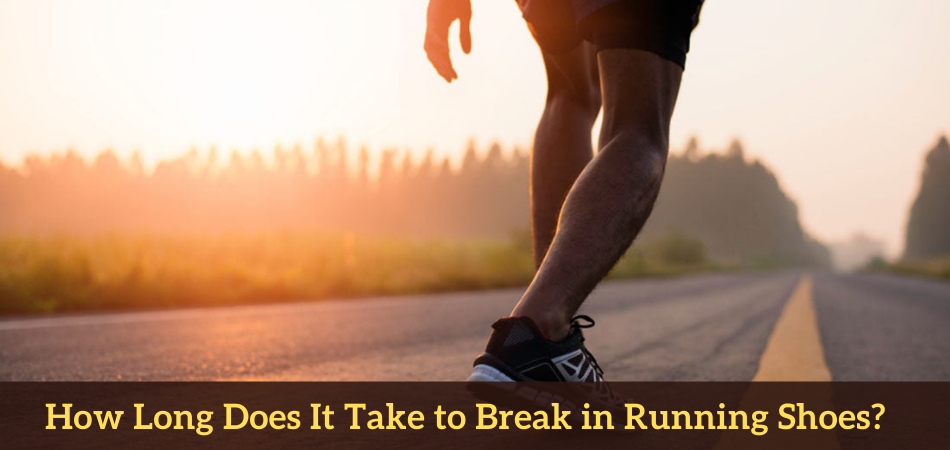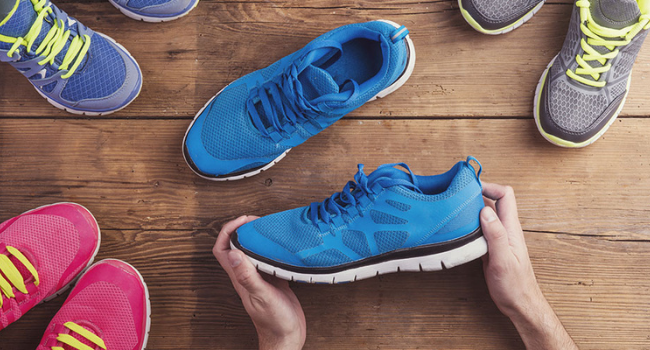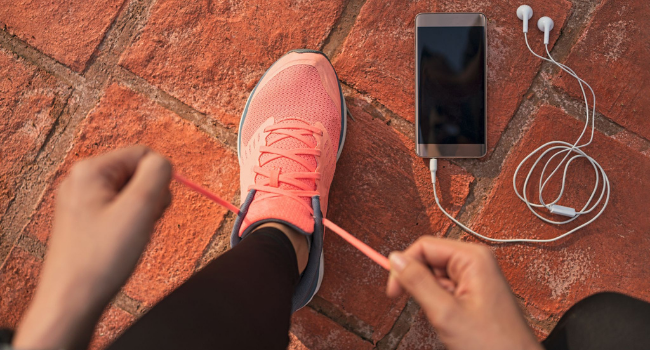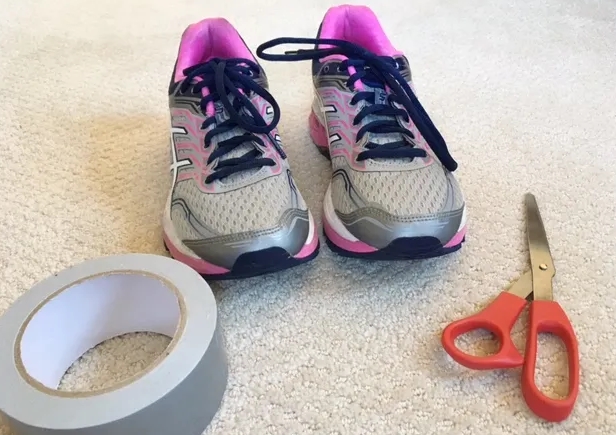Is your new pair of running shoes hurting your feet? Your health and well-being extend beyond your feet when you let the shoe break in for the perfect amount of time. Leg and back discomfort are often associated with wearing shoes that don’t fit properly. But a proper break in period can save you from the trouble. This begs the question, “how long does it take to break in running shoes?”
Running shoes can take two to three weeks, sometimes even more, to break in properly. However, the process goes beyond a specific time frame as other factors such as shoe model, thickness, materials, and even the foot itself come into play.
This article focuses on the reasons why a proper break in period is important for wearing new shoes, how long it actually takes, and how you can break in a new pair of running shoes properly. Let’s get to it.
Why Do Running Shoes Need to Be Broken in?
You need to break in a new pair of running shoes for a variety of reasons. Manufacturers will most likely use rigid and robust materials to construct the shoe. Materials that don’t have enough flexibility and softening are more likely to cause blisters, aching muscles and arches, bunions, and more.
Below are some of the reasons why you need to break in new running shoes before wearing them for prolonged hours.
Blisters
Shoes too tight can cause blisters, which are elevated pockets of skin filled with fluid. It doesn’t matter what brand or model of running shoes a runner is currently using; even if they buy identical shoes, they won’t feel the same. An individual’s foot and running pattern would progressively wear out a pair of shoes that had been used for an extended period. Blisters can form if you wear shoes that don’t have these advancements for long periods.
It’s easy to dismiss blisters as inconsequential, but they may be incredibly painful and even infectious if they’re popped incorrectly. This is because they can get contaminated and expose delicate materials. In addition, they disrupt a runner’s routine by making shoes fit improperly, leaving socks dirty, and again causing discomfort.
Bleeding and chafing are other common adverse effects in addition to blisters. Shoes can tear away layers of skin and create open wounds that are susceptible to bleeding.
Muscle Aches
When a runner gets new shoes, they tend to adopt a new posture that matches the shoes. This results in muscular pain. Although the shoes are the same brand and make, the lack of break-in means that the foot is forced into new angles that runners are not used to. Therefore, running shoes should be broken gradually over a month or less to avoid or address all these issues.
The effects of wearing the wrong running shoes are quite painful. So, you must make sure you’re wearing the right shoe size and following the proper ways to break them in, which I’ll discuss later in this article.
How Long Does It Take to Break in Running Shoes?
There is no one specific answer to this question.
Various elements influence how long the breaking-in time lasts, including the shoe’s model and manufacture and the sole’s thickness, and the fabric’s general stiffness. Minimalist running shoes, on the other hand, may take only a few days to break in, whereas motion control or shoes with thick bottoms and lots of cushioning may take several weeks.
The reason for this is that your new running shoes will not be ready for a long and strenuous run right out of the box. Although certain types may take longer, most running shoes require two to three weeks of break-in time. If they don’t feel right after a month, you’re wearing the wrong footwear.
There are several factors to consider when it comes to breaking in a new pair of running shoes. If you currently possess a pair in the same design and size, your feet will be more familiar with the experience, and it will go more quickly.
In the case of new models or versions, it may take a few weeks longer.
Only you can tell when you are ready to go the additional mile. It’s important to remember to go slowly to avoid blisters, which might limit your ability to run for an extended period.
How to Break in Running Shoes?
Have you ever complained about new running shoes hurting your feet?
Running in the right footwear is just as crucial as the training you put in to improve your running technique. However, new shoes can become a hassle if not worn properly. We’ve already discussed the importance of breaking in new running shoes. Now let me help you find out how you can do it the right way.
Choose Right Fit
First and foremost, choose the right shoe size for your foot type and training objectives. This should go without saying. Runners often make the mistake of prioritizing fashion over comfort. Comfort is the essential factor to consider if you’re in the market for a mattress.
Running comfortably relates to the shoe’s cushioning, fit, and all these other factors. Instead of stressing how long it takes to break in a specific pair, get the correct shoes. It’s essential that your new running shoes don’t feel overly snug, tight, or confining when you put them on.
Try experimenting with custom laces or insoles if none of the above work.
Walk-in Shoes before Running
Long-term runners often let their feet get used to new shoes. This also includes loosening the sole and determining whether any seams can cause discomfort. Even event organizers like the Castle Triathlon Series advise participants to walk about in new shoes before taking it for a run. This helps understand better how the footwear fits and any constraints it may impose on their performance.
You should wear the shoes in various settings and for at least an hour during a walking session for the optimum benefits. Wearing the shoes to the grocery store, taking a brief stroll outside, or even hiking a beginner’s route are all excellent options to finish this phase in the breaking-in process.
So, you shouldn’t wear the shoes for any more than 30 minutes at a time for the first few days so that they may build up to an hour-long session. This will create excellent coordination between shoes and your feet.
Running
Go for a slow jog instead of a fast one when you’re ready, and make sure you don’t have a long run scheduled. For the first few runs, or until you’re sure you’ve fully broken them in, don’t go more than 5K. In this way, even if you acquire a blister, then you’ll be able to walk home.
Also, keep your weekend trail run plans on hold until you’ve used your new shoes for a few weeks. In the meantime, you can wear them casually.
Moreover, you should rotate your old footwear with your new ones during the first several weeks. The new shoes will fit better and last longer on your feet since you’ve given them more time to adjust.
Running in various shoe shapes and sizes can also help lower the risk of injury, as varied shoes spread the impact forces you experience when your feet contact the ground more equally.
Wear Comfortable Socks
When you’re breaking in new running shoes, your feet will appreciate the extra comfort provided by technical running socks. Consider wearing thicker socks if you’re experiencing hot areas during your first few runs. You should cushion your toes and heels in your socks.
Keep Switching Between New & Old Shoes
Switching shoes back-to-back on the same run is a great technique to break in new running shoes without having to stop your workout. As a result, you can wear the new ones for around 30 minutes before replacing with an older, more comfortable pair.
Use Duct Tape or Talcum Powder
Using duct tape or talcum powder to avoid blisters and preserve comfort while stiff footwear is a standard method of breaking in shoes. Talcum powder, commonly known as baby powder, is readily available in most supermarkets and department shops in the United States.
According to Cleveland Clinic, talcum powder can reduce friction and wetness on the feet while wearing a new pair.
When applying the duct tape and powder, focus on the foot areas where the skin is most likely to brush against the inside of the shoe. The ball of the foot, the heel, ankle, or even the middle of the foot are the most prevalent locations.
It’s easier to break in shoes using talcum powder or duct tape, and duct tape also helps stretch out areas of the shoe where friction is likely.
Heat the shoes
This strategy can also come in handy. Your running shoes will fit better if you heat them. Allow the shoes to break in on your feet for at least 15 minutes before using them. For 2-5 minutes, use a hairdryer to blast them. The shoes will be more pliable to your feet if you do this while wearing them.
If you choose, you may reheat them a few more times. However, wait until they cool off before attempting to reheat them again. Otherwise, you’ll end up detaching the sole.
Final Thoughts
That’s it! In addition to answering how long does it take to break in running shoes, I’ve discussed few other major concerns you may have regarding the matter. It’s possible to acquire blisters or other issues when wearing improper shoes.
Even if you can get a refund if you return them, it’s wiser to try to break them in first. However, just make sure you’re buying the right fit and giving the shoes enough time to break in.






